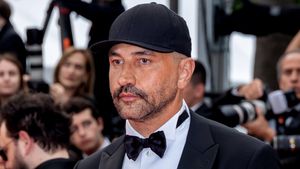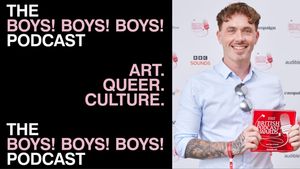In the following excerpt from his new memoir, Christopher Zyda describes a haunted Los Angeles of the mid-1980s and tells a story that feels remarkably familiar 35 years later.
In 1985, when it came to ostracism Los Angeles wasn’t really all that different from Kokomo. Much of humanity missed the opportunity to do the right thing in the face of the AIDS epidemic. Many of our friends, upon their AIDS diagnoses, simply chose to ostracize themselves and disappear from public out of shame. We would only see them again in hospitals or, all too often, never hear from or about them again—until their obituary appeared on the Athletic Club’s gym bulletin board or in Frontiers, West Hollywood’s gay community news magazine, or maybe never again at all. I became obsessed with searching for and reading obituaries, an obsession that continues to this day. Beginning in 1985, our friends started to leave Los Angeles to scatter everywhere because of the virus. This particularly pained me since it went against my craving for complete order in my life. I couldn’t keep track of where people went. Was he dead? Was he dying in a hospital somewhere? Did he move back to his hometown to be with family? Did he go on disability and move to Palm Springs to die alone in a $10,000 condominium? Did he go back into the closet? Did he go into hiding to ride out the storm? The answer was “all of the above.” As people scattered because of AIDS, so did my life. There could be no order when life itself could not be counted on. I aged much more than a year in 1985. I was only twenty-three years old.
That year, I started to spend evenings and weekends visiting friends in hospitals: Sherman Oaks Hospital, UCLA Medical Center, Cedars-Sinai Hospital, Century City Hospital, and Midway Hospital. I came to know them all, their convoluted hallways, AIDS wards, cafeterias and vending machines, pay telephone booths, and waiting rooms. Try to imagine the insanity of visiting one friend in the hospital, and then discovering that one or more other friends were hospitalized there too, fighting the same illness. I remember seeing worried, grieving partners and friends, sitting stone-faced in hospital waiting rooms alongside me, all of us trying to comprehend the reality of our reality: what do we do now? The AIDS virus has turned the whole world against us.
The number of funerals and memorial services that I attended beginning in 1985 eventually made me numb. I stopped crying at them because I had nothing left inside. My AIDS grief was a constant process, like watching a repeating slow-motion film unfolding right in front of me over and over, and knowing how the film ended: always in death. In 1985, AIDS treatments only delayed the inevitable, because at that time the treatments were worthless. The sun was gone, dark clouds now blanketed the sky, and rain started falling all around me. Welcome, Chris, to the storm.

Excerpted from The Storm: One Voice from the AIDS Generation by Christopher Zyda (Rare Bird Books, released December 8, 2020).












































































